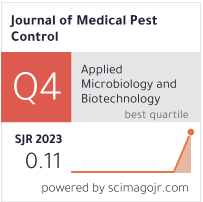Clinico-pathological study to evaluate the role of Hematoxylin and Eosin staining in determining the prevalence of celiac disease in patients with unexplained anemia who underwent endoscopic evaluation in Dhi Qar: a prospective study.
Abstract
Background: Celiac disease is an enteropathy of immune-mediated disease that is caused by a genetically determined persistent sensitivity to gluten. Conversely, iron deficiency anemia is the most prevalent type of anemia that people experience. A common extra-intestinal sign of celiac disease is IDA as well. Objective: This study aims to ascertain the sensitivity of endoscopy to diagnose celiac disease, as well as the prevalence of CD in patients with unexplained IDA and the GIT sources of anemia in those patients. Methods: This was a cross-sectional study of patients with IDA. Colonoscopy and Esophageo-Gastro-duedenoscopy were performed to determine the source of anemia. Four to six biopsies were collected from the second section of the duodenum. Small intestinal histologic characteristics were understood using the modified Marsh criteria. The total number of patients was 308, with 226 females and 82 men across all age categories. Methods: This was a cross-sectional study of patients with IDA. Colonoscopy and Esophageo-Gastro-duedenoscopy were performed to determine the source of anemia. Four to six biopsies were collected from the second section of the duodenum. Small intestinal histologic characteristics were understood using the modified Marsh criteria. The total number of patients was 308, with 226 females and 82 men across all age categories. Results: 78 of 308 individuals (25.3%) obtained biopsy results consistent with CD. 43 (55.1%) celiac disease patients were between the ages of 15 and 30; 18 (23%), between the ages of 31 and 45; 9 (11.5%), above the age of 45; and 8 (10.3%), under the age of 15. Out of 78 CD patients, 35 had Marsh grade IIIA, 23 had Marsh IIIB, 14 had Marsh IIIC, 5 had Marsh II, and one had Marsh I. Twenty were male, and fifty-eight were female. Conclusion: Even in women who are menstruation, CD should be taken into consideration by doctors as one of the potential reasons of anemia in any IDA patients of unclear origin. Premenopausal women with iron deficiency anemia should have serologic screening tests done, particularly if the anemia is not improving with oral iron therapy. In order to rule out CD, all patients with otherwise unexplained IDA should have upper gastrointestinal endoscopy and at least four duodenal biopsies.
Keywords: Celiac disease; anemia; iron deficiency, transglutaminases, H&E.
Full text:
PDFReferences
FAEZ KHALAF ABDULMUHSEN,1 ALI SAMEER MUSA AL SHAMMAA,2 MOHAMMED ABDULLA MEHDI,3 HUDA KAREEM,4 DURAR ALI,5 ADEEB ABDULALLY ABDULHUSSIEN,6 HAMEED NAEEM MOUSA,7 RASHA QUSAI AL-JAWHER,8 LAMIA JARALLAH YASEEN.9



